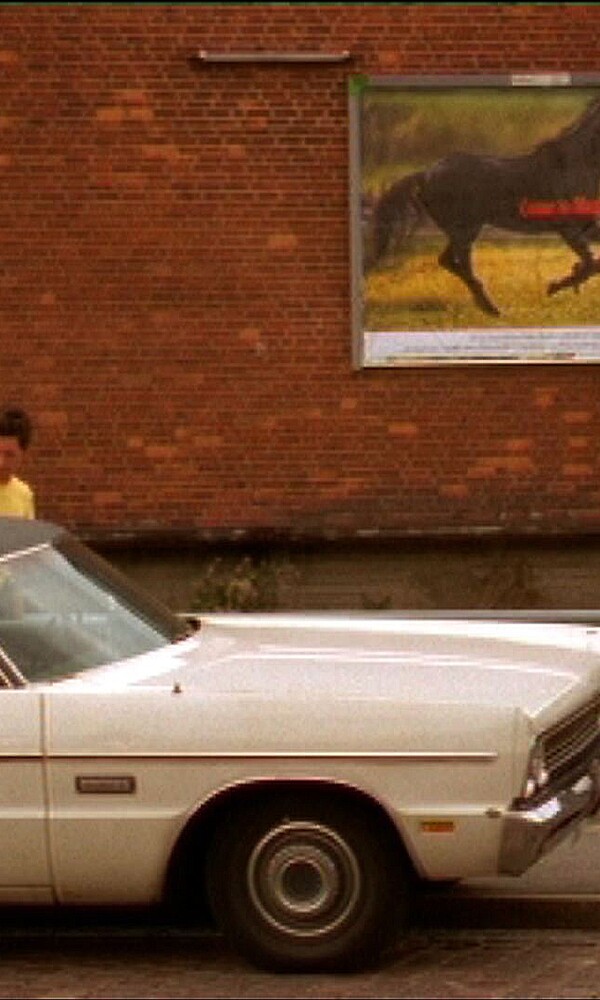"The Hamburger Kunsthalle has an outstanding media collection which offers a wide-ranging overview of the history of media art based on over 600 videos, films, video installations, record albums, audio cassettes and CDs spanning the period from 1960 to today. The focus of the collection, which was founded in 1977 and has been greatly expanded since 1993, is primarily on video installations, including ground-breaking works by artists such as Vito Acconci, John Baldessari, Joseph Beuys, Tracey Emin and Bruce Nauman. In recent years the collection has added important works by younger artists including Thorsten Brinkmann, Vajiko Chackhiani, Prinz Gholam, Clemens von Wedemeyer and Tobias Zielony. »The Video Is the Message« is the first showing in a long time to offer a comprehensive look at the museum’s media holdings.
Borrowing its title from Marshall McLuhan’s now legendary 1967 publication »The Medium Is the Message«, the exhibition presents video art classics from the Fluxus movement such as »Beuys in America« , 1974, and »I Like America and America Likes Me«, 1981, as well as various aspects of video art ranging from the documentary to the political film, from narrative stories to so-called “confessional” films dealing with questions of self-dramatization or social conflicts (Tracey Emin, Rebecca Horn, Jeanne Faust and Tobias Zielony). Another collection focal point is body art, represented by Günther Brus, Valie Export and Hannah Wilke. Artists such as Hannah Wilke and Eleanor Antin in particular used the medium of video to document their feminist performances in the 1960s and 70s. They are still regarded today as pioneers of video art, influencing the productions of artists such as Tracey Emin and Shirin Neshat. Younger artists such as Clemens von Wedemeyer and Prinz Gholam, by contrast, link in their own individual ways issues of history, place and identity.
Artists:
Vito Acconci, Eleanor Antin, bankleer, Joseph Beuys, Thorsten Brinkmann, Günther Brus, Peter Campus, Lenka Clayton, Tracey Emin, Valie Export, Jeanne Faust, Pia Greschner, Johan Grimonprez, Rebecca Horn, Jürgen Klauke, Till Krause, Shirin Neshat, Nam June Paik, Prinz Gholam, Ben Rivers, Pipilotti Rist, Ulrike Rosenbach, Clemens von Wedemeyer, Hannah Wilke, Tobias Zielony and others."
In Anlehnung an Marshall Mc Luhans inzwischen legendärer Publikation »The Medium is the Message« (»Das Medium ist die Botschaft«, 1967), werden neben den Klassikern der Videokunst aus der Fluxus Bewegung wie »Beuys in Amerika«, 1974 und »I Like America and America Likes Me«, 1981, unterschiedliche Aspekte der Videokunst gezeigt: Von der Dokumentation über den politischen Film, den narrativen Stories bis hin zu den sogenannten „confessional“ Filmen, die sich mit Fragen der Selbstinszenierung oder sozialen Konflikten (Tracey Emin, Rebecca Horn, Jeanne Faust oder Tobias Zielony) beschäftigen. Ein Schwerpunkt der Sammlung sind u. a. Werke zur Körperkunst von Günther Brus, Valie Export oder Hannah Wilke. Vor allem Künstlerinnen wie Hannah Wilke oder Eleanor Antin haben in den 1960er und 1970er Jahre das Medium Video genutzt, um ihre feministischen Performances zu dokumentieren. Sie gelten bis heute als Pionierinnen der Videokunst, denen Tracey Emin oder Shirin Neshat mit ihren Inszenierungen gefolgt sind. Jüngere Künstler wie Clemens von Wedemeyer oder Prinz Gholam verknüpfen dagegen auf unterschiedliche Weise die Frage von Geschichte, Orten und Identität miteinander.
Künstler_innen:
Vito Acconci, Eleanor Antin, bankleer, Joseph Beuys, Thorsten Brinkmann, Günther Brus, Peter Campus, Lenka Clayton, Tracey Emin, Valie Export, Jeanne Faust, Pia Greschner, Johan Grimonprez, Rebecca Horn, Jürgen Klauke, Till Krause, Shirin Neshat, Nam June Paik, Prinz Gholam, Ben Rivers, Pipilotti Rist, Ulrike Rosenbach, Clemens von Wedemeyer, Hannah Wilke, Tobias Zielony u.a.
